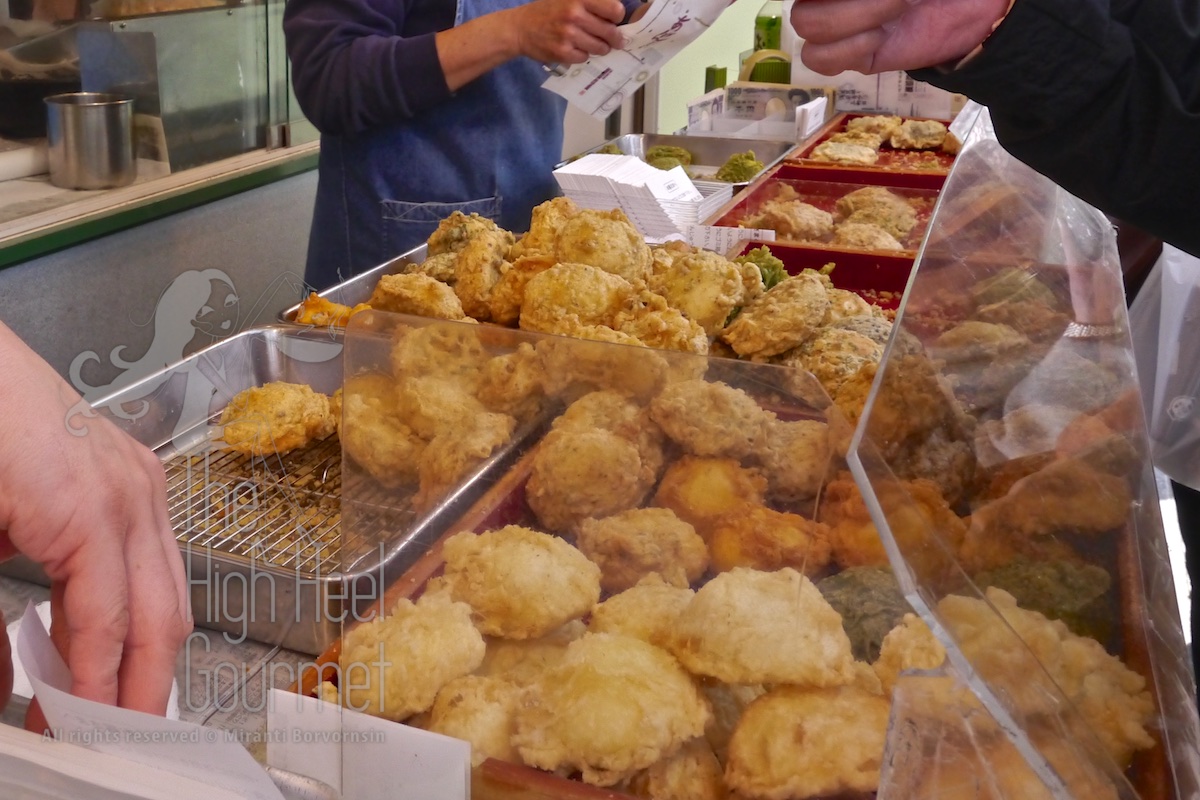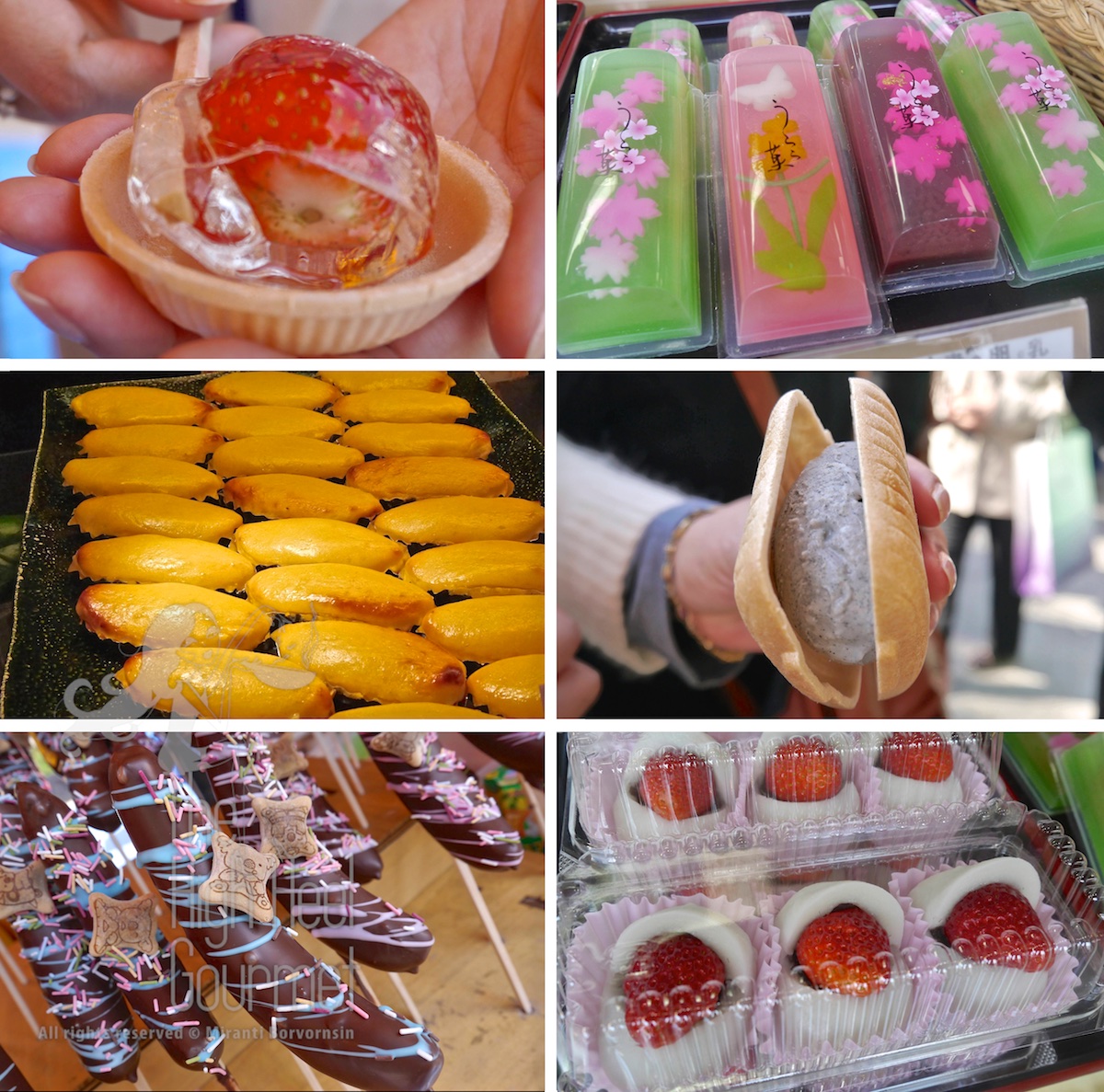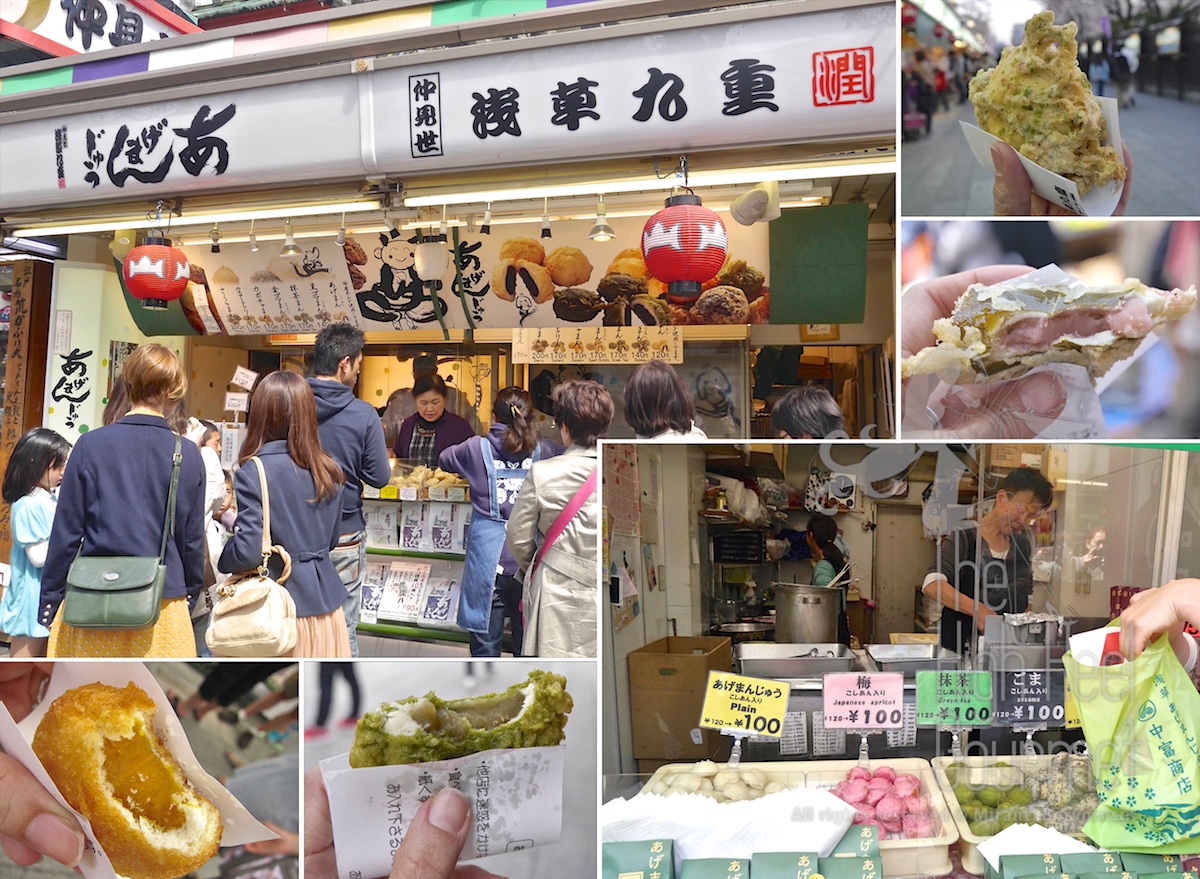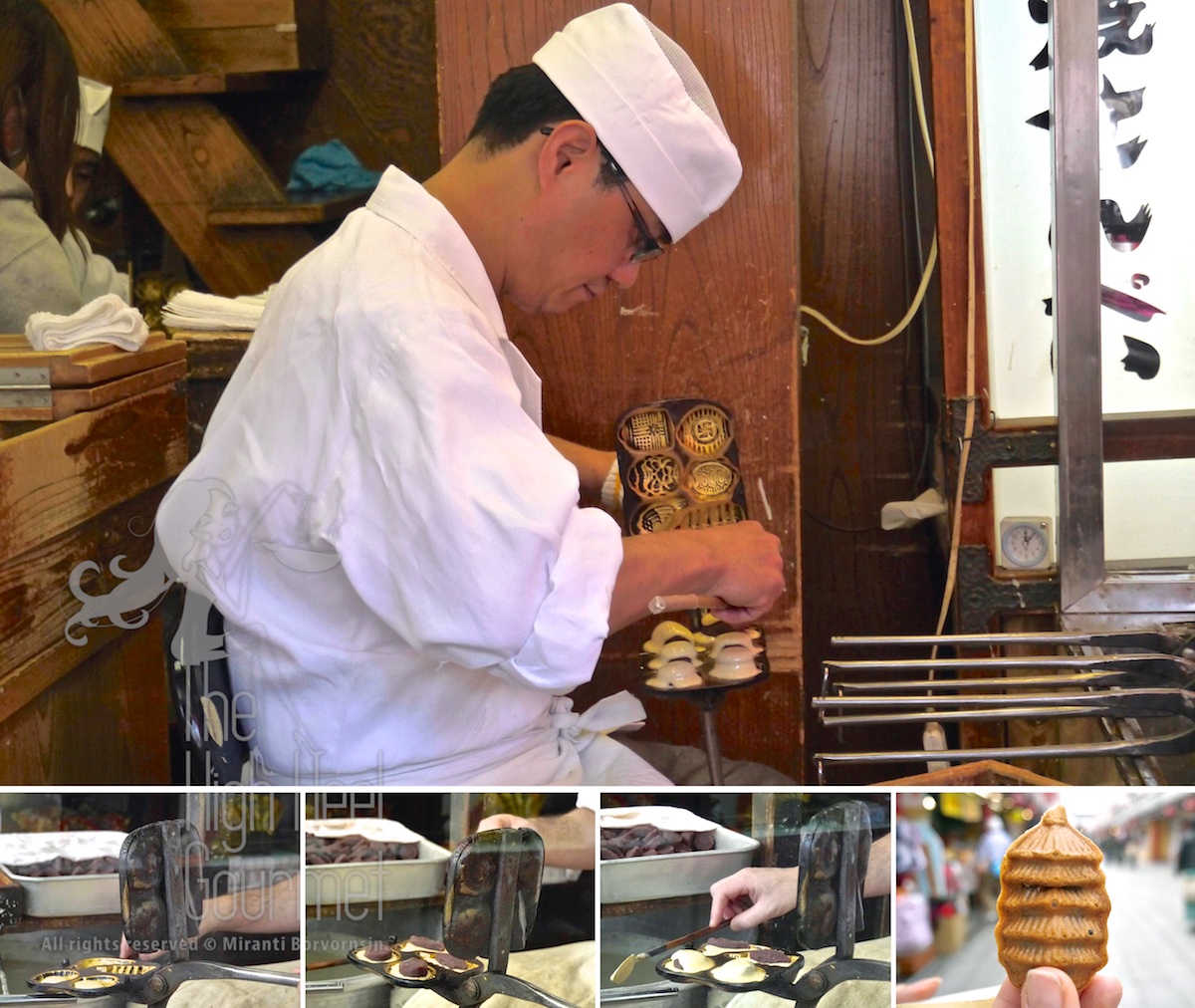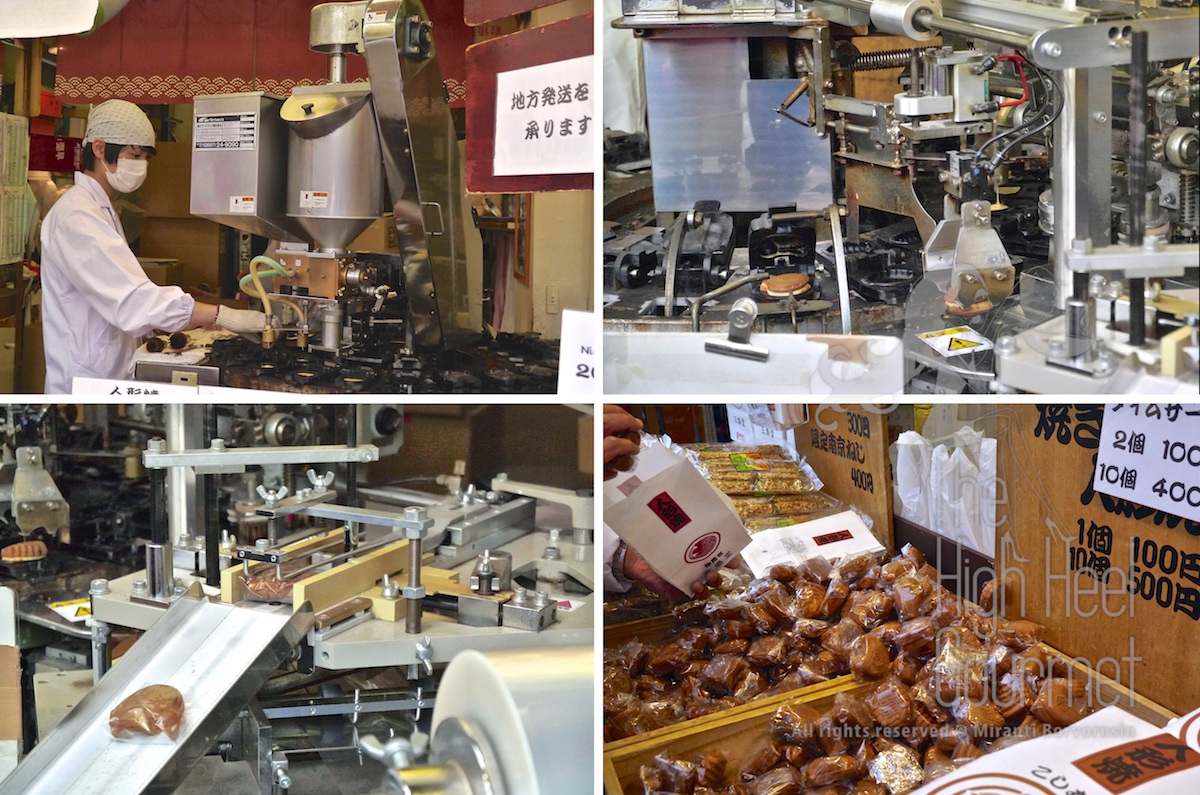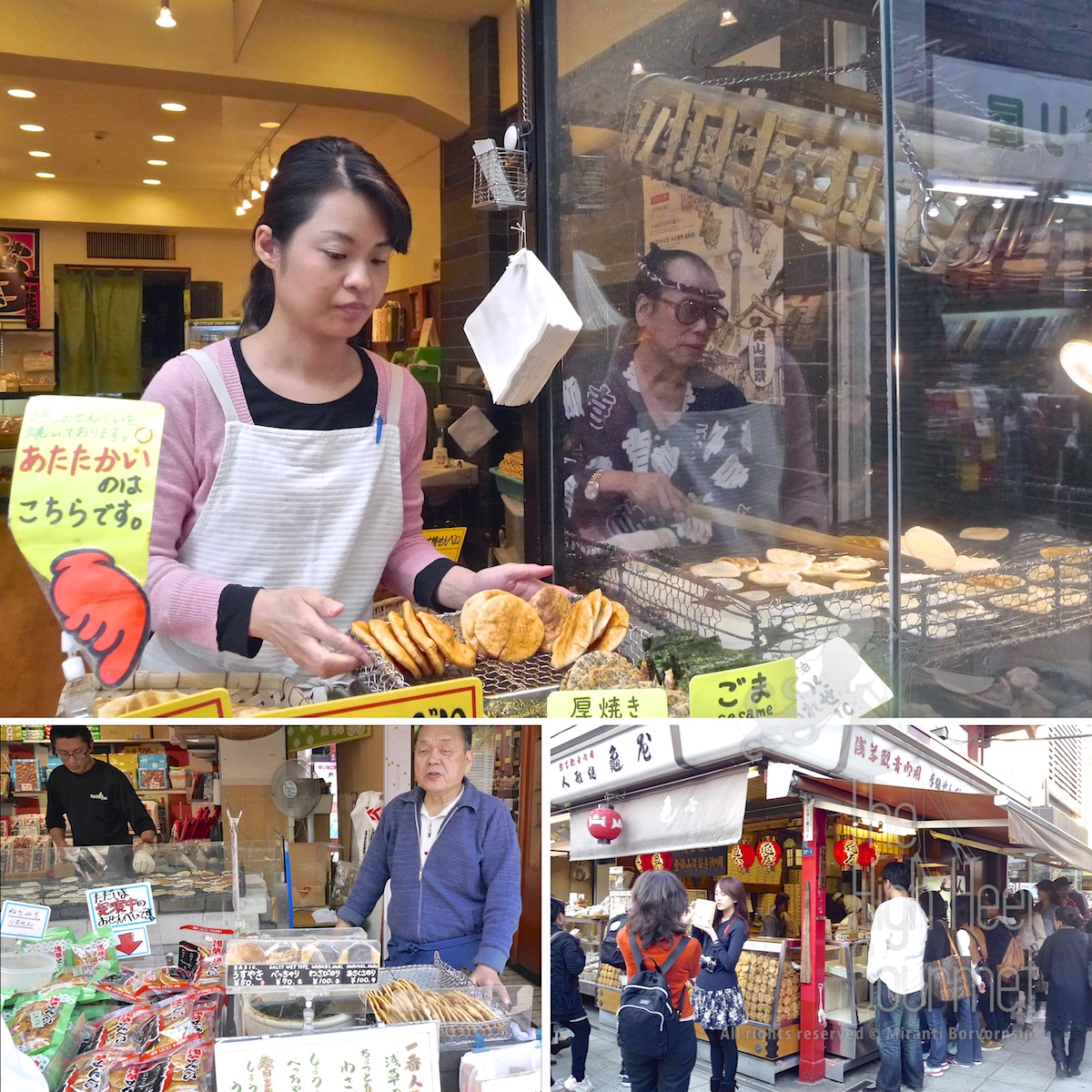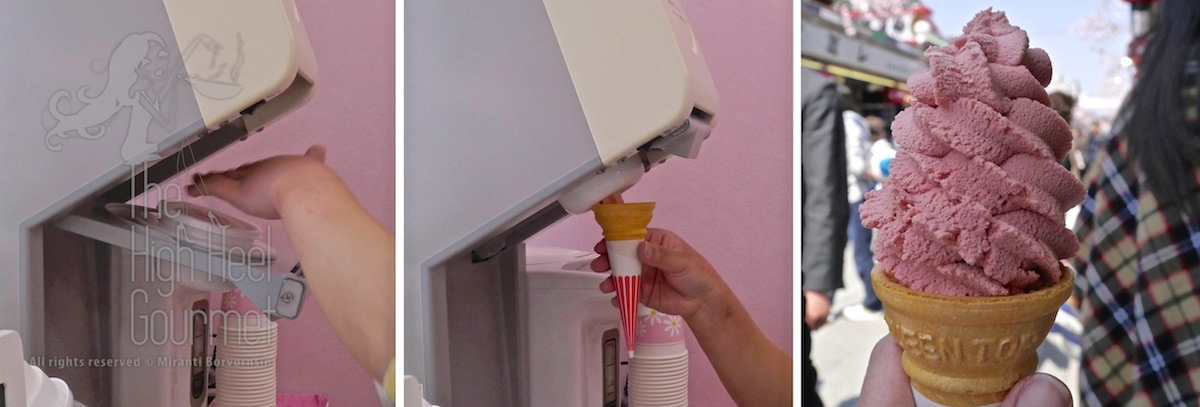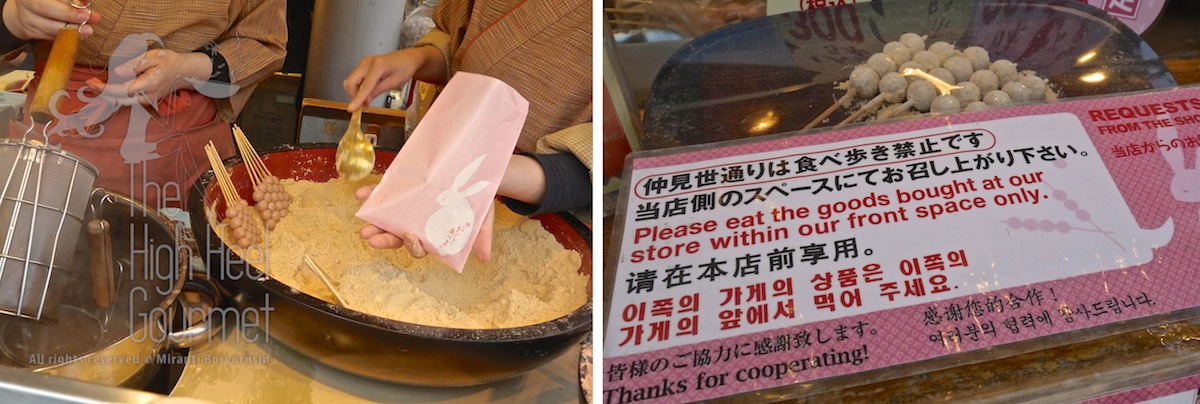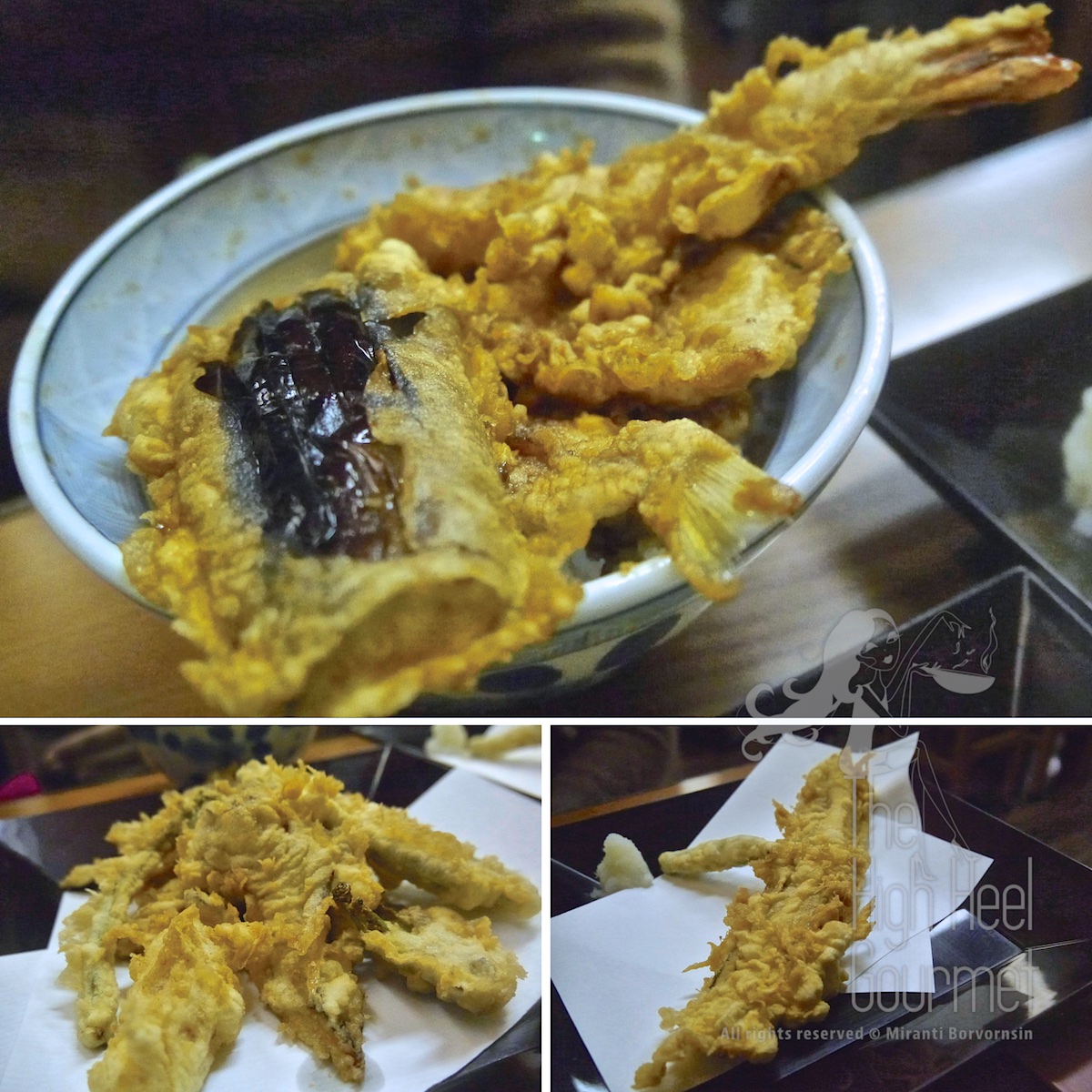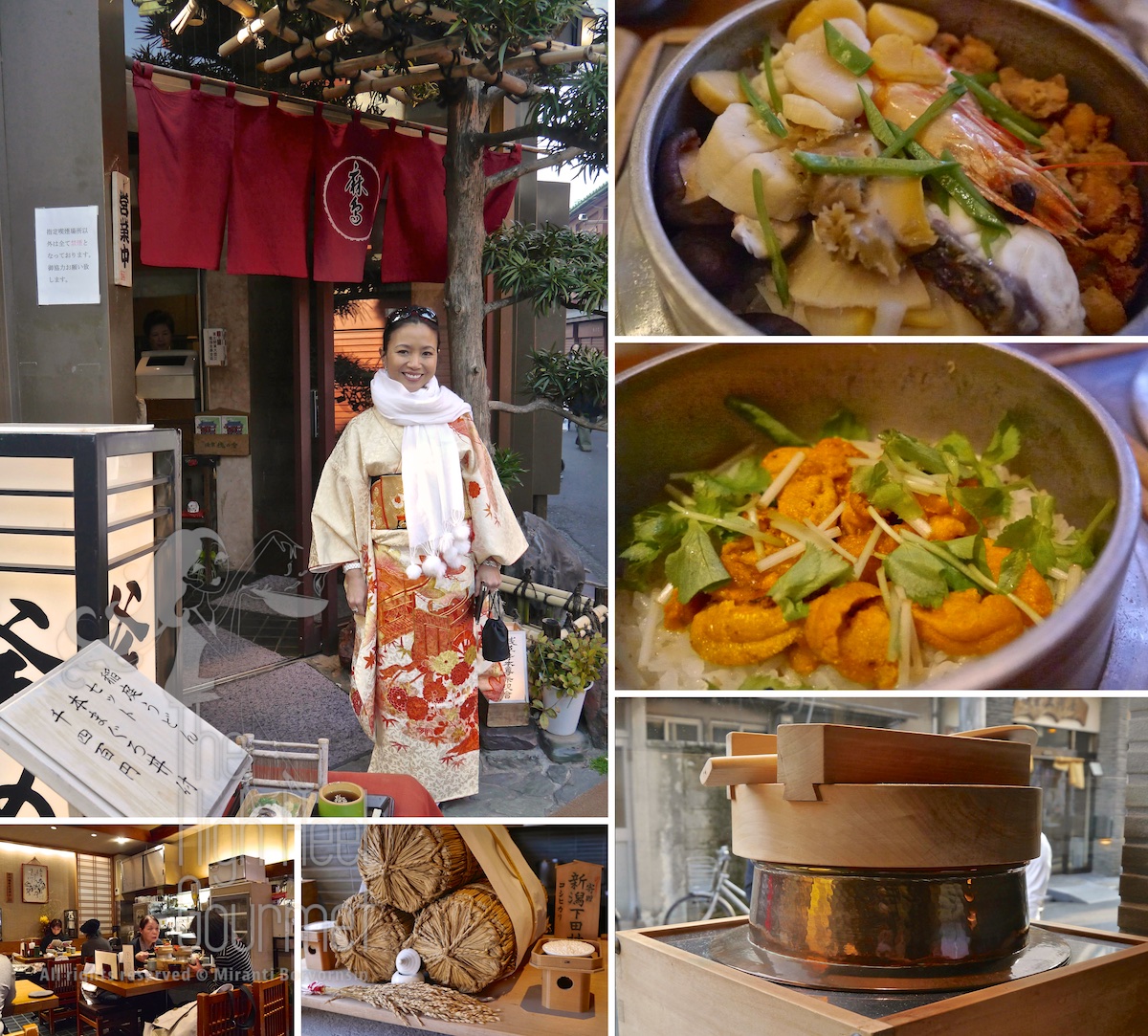After we indulged ourselves with sushi left and right, I swore if I had one more sushi meal it would have come out of our ears. We then moved to another neighborhood, Asakusa, the capital of snacks and desserts. You might have heard about Asakusa, that it was a place in Taito, Tokyo where people go to visit the Sensoji or Asakusa Kannon Temple. Yes, that’s the same place.
People who think about other not quite-important things can enjoy un-eventful events such as visiting the goddess of mercy-the Kannon-in the temple (she just stands there, you know), soaking or acutely coughing up the incense smoke in the main hall for good fortune, taking pictures of the beauty of a five-story wooden pagoda of the Asakusa shrine–boring stuff like that.
Myself, on the other hand, focused my attention on the small food shops along Nakamise Street, that runs from the Kaminarimon gate to the Nazomon gate. Nakamise Dori (street) is a very well known shopping street where, among the small shops that sell yukatas, getas, fans, and other souvenirs will be specialty shops selling yummy snacks, Senbei – rice crackers coated with soy sauce, Dango – rice dumplings skewered on bamboo skewers, Ningyo-yaki – the Japanese sponge cake that tastes more like a pancake, in various shapes filled with Koshian (red bean paste) made from Azuki bean, and so many more that I don’t know the names of.
My favorite is age-munju or fried manju. The soft dough that I think is rice flour, or a rice flour mix, is filled with bean paste in many different flavors coated with tempura-like batter and…deep fried. Uhmmmm…this is the best snack. There are two shops that sell these Age-munju. One called “Asakusa Kokonoe” (picture on top left) is at the end of Nakamise Dori near the Nazomon gate (nearer to the Sensoji temple), this section of the street has shops only on one side of the street. This shop sells 7-8 different flavors of age-munju.
There is basic, sesame, green tea, sweet potato, beef and cabbage, pumpkin (kubocha) and this time of the year why not a sakura flavor, which is sweet white bean paste wrapped with savory pickle sakura leaves. At the other shop (picture on the bottom right) there are fewer flavors, but one interesting flavor is the Japanese plum.
The most popular is Ningyo-yaki. It’s amazing to see how they make them. Since there are many shops that sell these little piece of yumminess, each shop makes them slightly differently. Some are still using the old fashioned cast iron pan that houses 4-6 molds in each pan, filling each mold with the batter, then squeezing or dropping the nuggets of pre-made azuki paste in middle of the mold, and then pouring more batter over. Once the other half of the pan is closed down, they put the pan to heat over the stove. All of these steps are done by hand.
Some of these shops have already advanced to the industrialized level, using a robot-like machine to make Ningyo-yaki. Some stores use a machine where employees still have to drop the azuki in and some use an all-automated process from the beginning to the end. The Ningyo-yaki pieces are automatically wrapped individually in plastic and come directly from the conveyor belt onto the bin, ready to be packed in boxes for customers. Amazing! The lines to buy the Ningyo-yaki are as long at almost every store, even though there are more than five stores selling them on Nakamise.
Another popular item around here is Senbei, the roasted rice cracker with shoyu flavors. There are many stores selling them along Nagamise Dori and Shin Nagamise, another street that crosses with Nagamise Dori and is lined with clothes shops, restaurants, and some specialty shops. It’s practically a mall because the street is covered with a canopy.
There is much other wonderful goodness along Nakamise Dori, like 50 flavors of soft ice cream in a little compact shop. Each ice cream flavor is pre-packaged. The salesgirl only puts the plastic container into the machine that will squeeze the ice cream out. My sister ordered the sakura flavor but the ice cream was frozen solid and wouldn’t behave like the soft-served ice cream, but it’s the concept that counts.
Dungo, mochi on the skewer that I never had a chance to taste due to the ridiculous long line at all times.
The gelatin-like desserts mixed with red beans and many other things called Anmitsu.
Behind the line of small shops there are more shops and restaurants. I tried two restaurants there. One is a tempura place named Sansada. The restaurant is located just to the right of Kaminarimon Gate, and perfumes the whole area with the wonderful, mouth-watering aroma of sesame oil.
This is an ancient restaurant that fries their tempura with this sesame oil. The result is quite interesting. The tempura is definitely not as crispy as the one fired with oils that have a higher temperature boiling point, but they certainly have that subtle hint of sesame oil. Sesame oil loses its flavor at the boiling point (that’s why you add it to your dishes last, before you remove them from the heat, just to maintain its expensive flavor). This restaurant also has a secret recipe for their tempura sweet sauce they pour over their tempura-donburi, too.
Another place called “Asadori” that serves Kamameshi is also in the second row of shops on Nakamise Dori. The name Kamameshi literally means “kettle rice” and is a traditional Japanese rice dish cooked in an iron pot called a kama.

